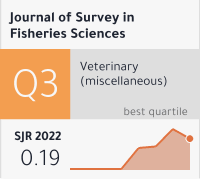A Study on the Correlation between Stock Market Performance and Economic Growth in India: An Empirical Analysis.
DOI:
https://doi.org/10.53555/sfs.v8i2.2454Keywords:
.Abstract
This study aims to explore the relationship between stock market performance and economic growth, investigating whether one leads to the other or vice versa. It examines both short-term and long-term dynamics of the stock market using monthly Index of Industrial Production (IIP) data and quarterly Gross Domestic Product (GDP) data from April 1996 to March 2009. Various tests including unit root tests (ADF, PP, and KPSS), Granger Causality test, Engle-Granger Cointegration test, and Error Correction Model are employed for empirical analysis.
The monthly Granger causality test results indicate a bidirectional relationship between IIP and stock prices (both BSE and NSE), while the quarterly results show no relationship between GDP and BSE. However, a unidirectional relationship is observed between NSE and GDP, with GDP leading to changes in NSE. The Engle-Granger residual-based cointegration test suggests a long-term relationship between stock market performance and economic growth. Similarly, the error correction model reveals that economic growth adjusts to restore equilibrium when there are deviations from the long-run equilibrium, indicating a 'demand following' hypothesis in the short run. The study's main contribution lies in identifying the role of economic growth in the development of the stock market. Introduction
The relationship between financial sector development and real economic activity has been a debatable issue in theoretical and empirical research. Schumpeter (1911) argues that well-functioning financial systems encourages technical innovations by reallocating resources to the entrepreneurs and promote economic growth. The stock market performance and economic growth has been the subject of intensive theoretical and empirical work. This debate revolves around whether stock price movements are influenced by economic changes or stock market performance helps in promoting economic growth. In this regard questions under consideration are; is there a relationship between financial sector development on economic growth and the identification of causal nexus between economic growth and financial development (Deb and Mukherjee, 2008).
The main objective of this study is to investigate the causal nexus between stock market performance and economic growth and to find the short-run and long-run dynamics of the variables by considering both monthly and quarterly data on Index of Industrial Production (IIP), Gross Domestic Production (GDP) and Stock Prices in the Indian context. Understanding of this relationship is important for policymakers to assist with development of policies for future economic development and direct allocation of resources in an optimal fashion. This is also of interest for investors in terms of understanding future movement of the stock prices in the market place. To our understanding this relationship has not been tested in the context of Indian market as yet. This study is the first study testing this relationship comprehensibly.
Causal nexus between economic growth and financial development has been of considerable attention in terms of identifying the causal direction. There is significant development in stock market of India after introduction of ‘New Economic Policy (1991)’ in India and debate commenced on the role of stock market performance promotes economic growth or vice versa; one stream of research suggests stock market development promotes economic growth. Opposite view is held by some researchers who have argued that this effect is marginal or in some extreme cases even negative. There are number of studies that have tested direction of causation between financial development and economic performance both at developed and developing countries. However, there are few studies which are addressing the vibrant causal relationship among stock market development and economic performance (Levine and Zervos 1996; Jefferis and Okeahalam, 2000; Shirai, 2004; Adajaski and Biekpe, 2006; Mun et al., 2008). Some studies documented that stock market development has played an important role in promoting economic growth in some economies; e.g., Demirguc-Kunt and Levine (1996); Levine and Zervos (1998). The empirical evidence from the literature suggests that the direction of causality between stock market development and economic growth has been inconclusive (Odhiambo, 2008) and it indicates that results are sensitive to the model employed and type of data used in the analysis. Outcome also differs from country to country over the time period.
India has adopted modern strategies to promote its stock market development since late 1980s and this has become more sophisticated after the introduction of economic reforms of 1991. These reforms brought expansion in terms of number of listed companies, number of shareholders in the market and market capitalization; this has resulted in India to become one of the most active and leading market among all developing countries of the world (Nagaishi, 1999). Economists often say that the movements of stock prices either ‘up or down’ are reflective of public expectations towards policies. An increase in stock prices is reflective of future expansion of economic growth and a decline in stock prices is associated with expected potential economic recession (Mun et al., 2008). The ongoing debate was initially concentrated on financial development and economic growth. Since last few decades the growing importance of stock markets in developing countries in promoting economic development process has continued to attract attention in both academia and among policy-makers. With these developments, stock markets have been playing an important role in mobilizing domestic savings by providing suitable incentives to savers to diversify their portfolios (Vazakidis and Adamopoulos, 2009). Stock markets offer capital investment at competitive cost to entrepreneurs that boost the economic development.
The remainder of this study is organized as follows: Section 2 provides a brief theoretical and empirical review of literature on the causality between financial development and economic growth and the stock market development and economic growth. Section 3 discusses nature and sources of data, variables and empirical methodology for testing causality and identification of short run & long run relationship among the variables. Section 4 presents empirical results of the study. Finally, section 5 provides summary and conclusion of the study









